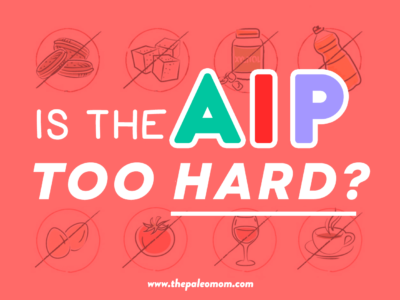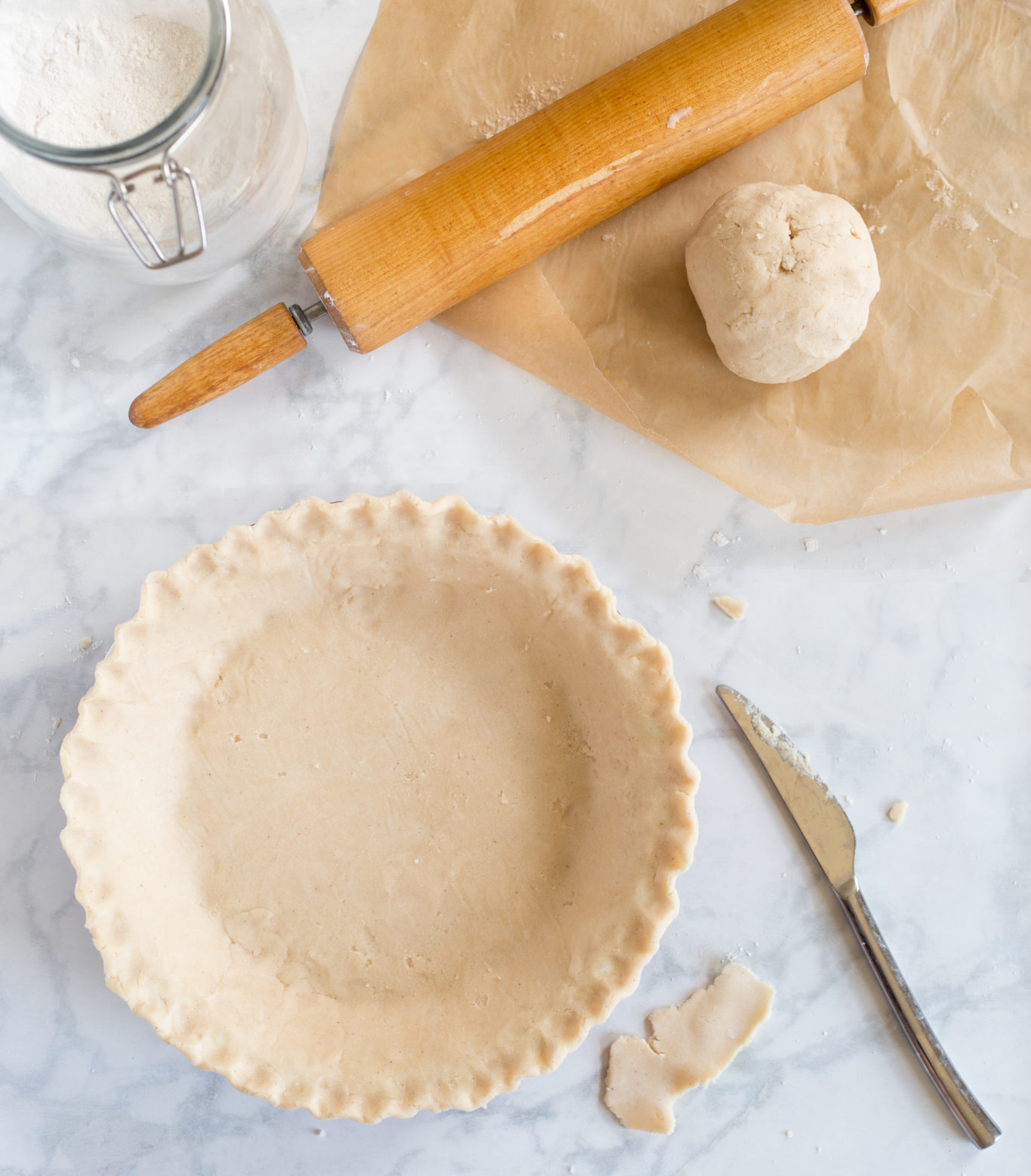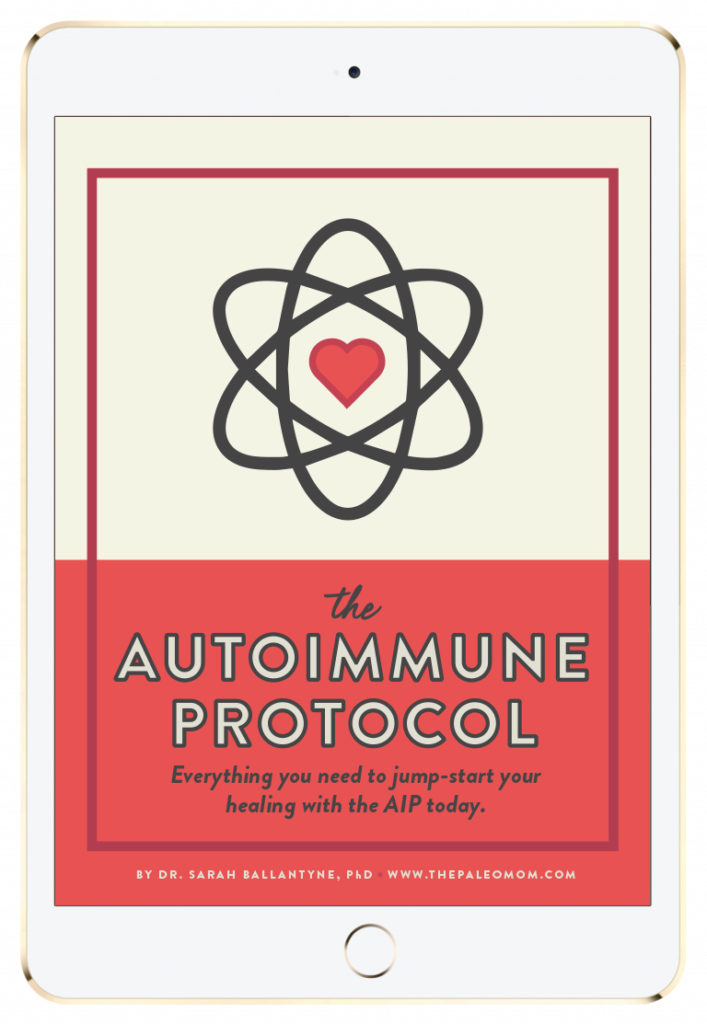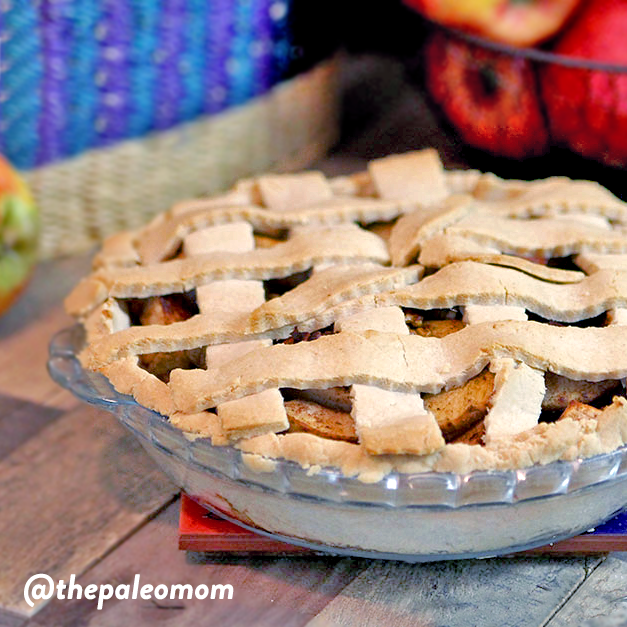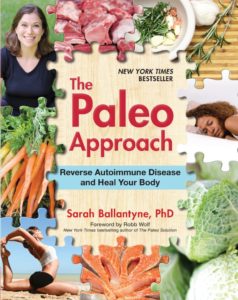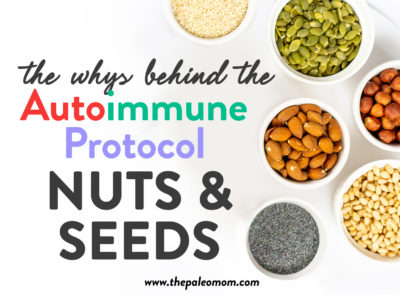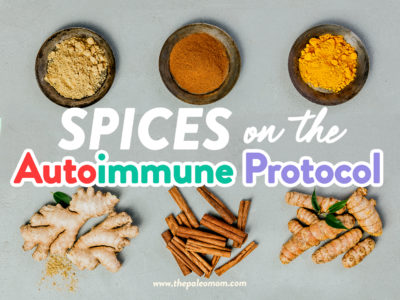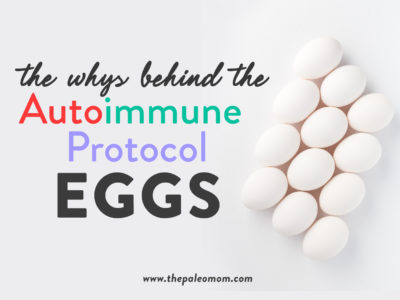There is one pervasive myth about the Autoimmune Protocol: It’s too hard.
When it comes to learning about and implementing the AIP, there’s definitely a learning curve. I liken this to the similar learning we do when we move out on our own for the first time. No matter how well our parents prepared us for that new independence and responsibility, the reality of having to buy our own groceries on a budget and prepare all of our own meals forces us to develop some skills pretty quickly! I remember as a young college student running out of money a week before payday and having to stretch $20 worth of cheap bread and peanut butter for every meal that week. That only happened once, because I budgeted much better the following month! I also remember eating meals that I had prepared that decidedly did not taste good, because I couldn’t afford to throw out food. I think there’s no better way to learn to cook than to make mistakes in the kitchen that you’re forced to eat! In fact, my recipe development skills were borne out of trying to fix cooking mistakes during that period of my life. Fortunately, when it comes to the AIP, we don’t need to completely relearn all these lessons. Instead, we build on the skills we’ve already developed and only adapt what we already know to a new dietary template. I can say unequivocally that it was far, far, far easier for me to learn how to buy and cook AIP foods than it to learn how to buy and cook food in the first place.
Once you get through this learning curve and figure out how to fit the AIP to your life, the AIP becomes matter-of-fact: it’s just how we eat. Getting to “the other side”, where the AIP is as second nature as the standard American diet was before our health journeys began, requires troubleshooting individualized yet common challenges. We need to figure out: what we’ll eat for breakfast when we accidentally sleep in; what we’ll prepare on those busy weeknights when we get home hangry after work and chauffeuring the kids to their after-school activities; what pre-packaged foods we’ll keep on hand for a quick snack or an indulgent treat; new favorite recipes for quick meals and comfort foods; where we can get quality ingredients near us or a delivery service that provides great bang for our buck. To help you through this learning curve, I recommend The Autoimmune Protocol e-book, my AIP Lecture Series, and see 3 Time-Saving Strategies for the AIP, AIP Do’s and Don’ts, and Meal Plan with Real Plans!
Once we get through that learning curve, most of us adapt to the AIP and find that any trade-off in convenience is more than made up for in how we feel. But, I also want to acknowledge the collection of ongoing challenges to implementing the AIP that many people face, and provide you with a collection of strategies to meet those challenges head on.
 Making Healthy Choices: What’s Your Currency?
Making Healthy Choices: What’s Your Currency?
We think that the AIP is only worth pursuing if we complete adhere to it 100% for months on end. Certainly, doing so is definitely the most expedient way to heal, to enjoy the benefits of the AIP, and get to those life-enhancing reintroductions, but it’s not the only way to go about the AIP. I want to directly address those of you who are hesitant to start the AIP because of that one thing, commonly quality-of-life foods like coffee and chocolate. And here’s the take-home message: If that one thing is keeping you from diving into the AIP, keep it in your diet and do everything else prescribed on the AIP. If this one compromise is what gets you to take that first step, to make all of the other amazing, positive, healthy choices associated with your diet and lifestyle, then that is your currency. Buy in! Learn how to approach AIP while keeping that one thing in my post Making Healthy Choices: What’s Your Currency?.
Transition: All-In or Baby Steps?
Some people implement lasting change more successfully from a jump-in-with-both-feed approach, while others sustain change better with a gradual step-by-step implementation. When it comes to the AIP, there are certainly compelling reasons to go with one approach versus the other that might override your natural tendencies. But all else being equal, I think the first step to a successful transition is understanding ourselves, knowing our personal history and assessing the roadblocks we know could get in our way. Then, we can choose a route based on our desired outcome and timeline. Learn more in my post Transitions: All In or Baby Steps?
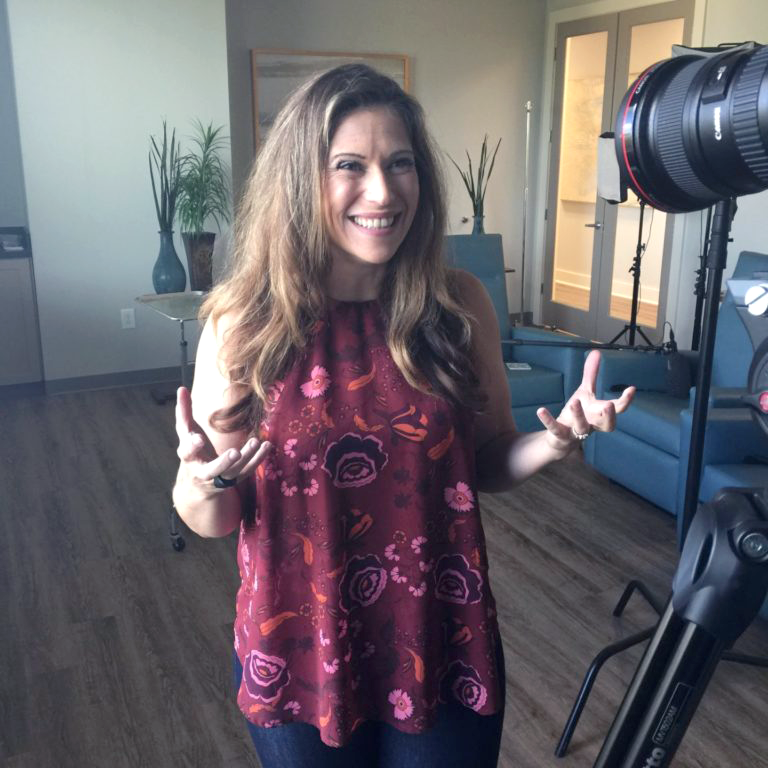
Common AIP Pitfalls
After creating AIP resources for eight years, talking with thousands of people about the AIP, and teaching my AIP Lecture Series, I’ve identified a list of common challenges, mistakes and pitfalls that can hinder healing. I generally find that a thorough AIP education is the best way to inure ourselves to these pitfalls, which is why I created the AIP Lecture Series in the first place. But, no matter how you’ve chosen to learn about the AIP and the why’s behind each facet of this protocol, as you read through the AIP do’s and don’ts (linked below), I encourage you to reflect. What are the easiest aspects of the Autoimmune Protocol for you to implement? What aspects of the Autoimmune Protocol enrich your life and bring you joy (independent of how healthy they are for you)? What are your biggest hurdles to fully implementing and/or sticking with the Autoimmune Protocol? What can you do to overcome these challenges? Thinking about possible upcoming challenges and identifying practical solutions is also a great way to insulate (at least as much as possible) against surprises that might otherwise derail your efforts. And appreciating the positive aspects of implementing the AIP is a great way to overcome mindset challenges. Read about the common AIP pitfalls in my post AIP Do’s and Don’ts.
Getting Beyond Feeling Deprived
One way to get beyond the feeling of deprivation is to focus on what foods we already love that are easy to make AIP. Yo, steak and bacon are totally AIP! (Here’s a tip: truffle salt makes a rockin’ awesome steak seasoning!) Love roast chicken? That’s easy to make AIP! You can make awesome dinner salads, roast veggies, and root veggie mash all AIP easily!! And fruit is AIP, and sweet potatoes, and plantains, and cassava. And there are tons of great new products out there that fill the void left behind by some eliminated foods. Not to mention all of the amazing recipes available by the community of AIP bloggers out there. When you incorporate more of the foods you already love that are AIP (or easily made AIP with a small adjustment), then it’s harder to miss those foods that no longer make your usual rotation. So yes, the AIP does include restrictions the rest of the world might not follow. It can require diligence and commitment to follow. But it affords us an amazing opportunity to take control of our health, and that’s something I see as a privilege, rather than a burden. I hope you can shift your mindset to see it that way too! Find more way to not feel deprived in my post AIP Mindset: Getting Beyond Feeling Deprived
 Cooking is Not a Burden
Cooking is Not a Burden
I know that some of us lack confidence in our cooking skills; cooking can feel stressful and requires more of our attention. But, we can overcome this feeling of cooking as a burden by thinking about our time investment in the kitchen differently. One mindset shift I’ve seen work time and again is embracing our kitchen as the center of our healing. It’s really the premise behind my second cookbook, The Healing Kitchen. When our pantry and fridge are filled with nutrient-dense, nourishing foods that our bodies are craving, it’s completely within our power to cook amazing meals that quite literally help us heal. That’s pretty cool! Plus, cooking for ourselves eliminates any stress or negativity that might surround eating out during the elimination phase of the Autoimmune Protocol. When we know each and every ingredient in a given dish, we can be sure we won’t have a negative reaction and can eat without fear of discomfort. Plus, cooking allows us to make just what we and our families like. Seeing the satisfaction on a loved one’s face after you’ve made an amazing meal is a feeling unlike any other! Read more in my post AIP Mindset: Cooking is Not a Burden
Save 70% Off the AIP Lecture Series!
Learn everything you need to know about the Autoimmune Protocol to regain your health!
I am loving this AIP course and all the information I am receiving. The amount of work you have put into this is amazing and greatly, GREATLY, appreciated. Thank you so much. Taking this course gives me the knowledge I need to understand why my body is doing what it is doing and reinforces my determination to continue along this dietary path to heal it. Invaluable!
Carmen Maier
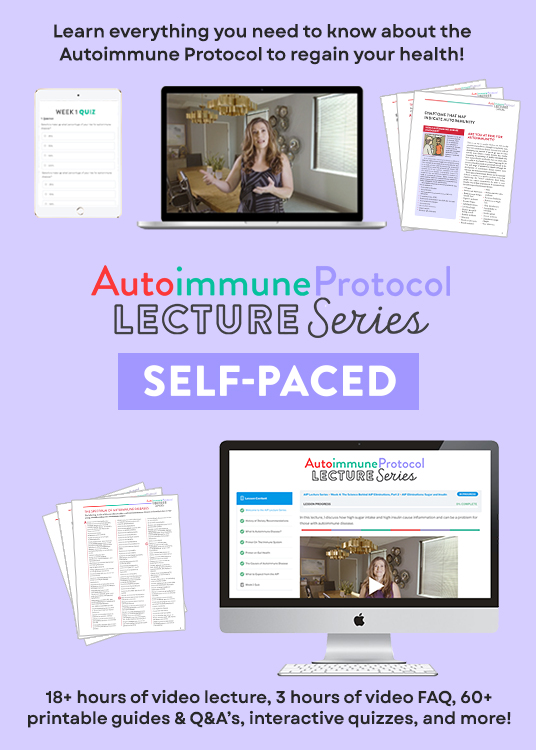
 Putting ‘YOU’ First
Putting ‘YOU’ First
No matter our hang-ups, it comes down to this: we cannot give ourselves fully to others when we are empty. The time you put into your health now will mean a longer, healthier, fuller life. It will mean you have more energy, attention and motivation in all your tasks. It might even change your outlook on life entirely. Think of your time investment into yourself as filling your car up with gas: once you’ve got a full tank, you can go farther and do more. But, you do need to top up your tank from time to time. In the case of self-care, I recommend committing some time every single day for the activities and commitments to yourself that keep you healthy and happy. Give yourself permission to focus on yourself and to put “me time” on your To Do list. When we are tempted to feel “selfish” for taking time to heal and nurture ourselves, we can remember that this time is not just for us, but for the people we love. By putting ourselves first, we’re investing in their future as well! Find more helpful tips on how to put ‘YOU’ first in my post AIP Mindset: Putting Myself First.
Optimism, Hope, and Healing
I know that when you are facing a chronic illness, hope and optimism can feel elusive. We can find hope by becoming our own health experts through educating ourselves about our diseases and the details of the AIP. And, just as we can take control of our diet and lifestyle, we can actively work to cultivate a practice of optimism with the simple tools described in my post, AIP Mindset: Optimism, Hope and Healing. And that’s good news, because cultivating hope and optimism might just be the most important mindset shift of all!
 The Baggage We Can Bring to the AIP
The Baggage We Can Bring to the AIP
I would argue that a food-phobic implementation of the AIP doesn’t qualify as actually following the Autoimmune Protocol. I’ve talked with people who only eat 12 different foods. Just because those foods are AIP, doesn’t mean that their diet is (they’re almost certainly missing out on important nutrients with such limited food variety). I can make a similar argument about avoiding reintroductions (there’s no opportunity for individualization, self-discovery, or nutrient expansion!) and orthorexia (lifelong health requires finding balance and sustainability, not to mention the stress management and mental health sides of this equation). Because the importance of addressing these mindset challenges can be lost in the absence of a thorough AIP education like the AIP Lecture Series, I feel that it’s important to call them out. Read more about food phobia and reintroduction fears in my post, AIP, Orthorexia and Food Phobia.
The AIP Is a Journey
The AIP can more accurately be described as a sophisticated elimination and challenge diet that embraces self-discovery via its reintroduction phase and respects bioindividuality via its maintenance phase. In this regard, the AIP is more like a step-by-step plan to help you identify your autoimmune disease triggers, truly understand the diet and lifestyle requirements of your own body, and hone in on a personalized diet and lifestyle plan that is optimal for you as an individual and sustainable for your entire life. You can think of the Autoimmune Protocol as encompassing three phases: Elimination, Reintroduction, and Maintenance. Discover all 3 phases in my post The 3 Phases of the Autoimmune Protocol.
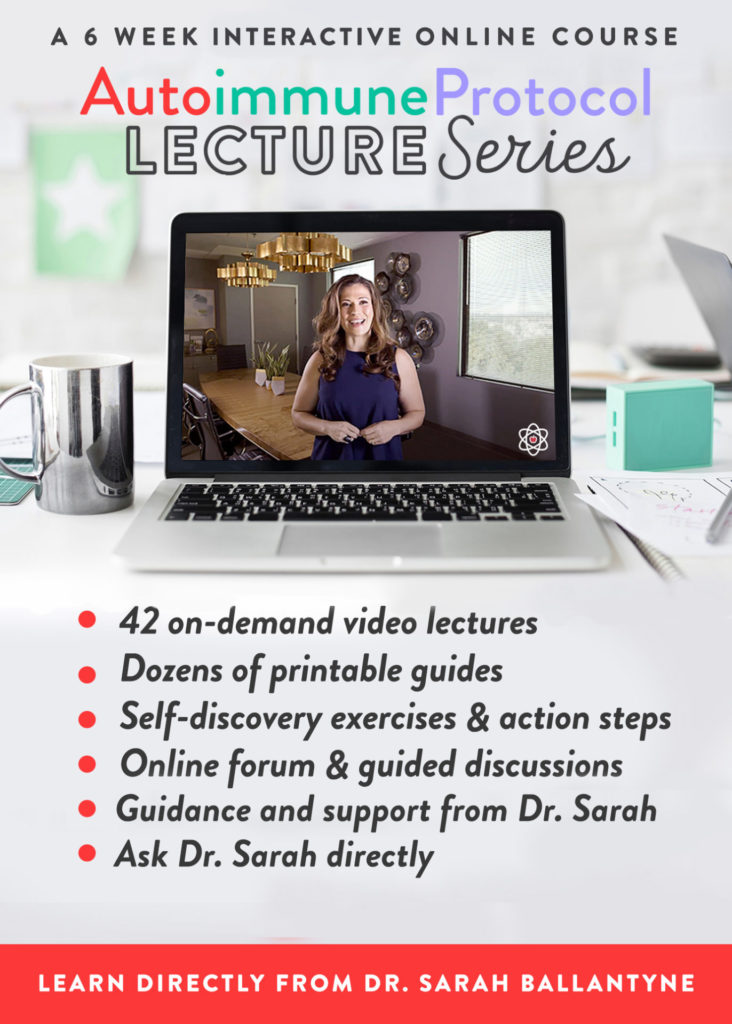 Set Yourself Up for Success
Set Yourself Up for Success
I firmly believe that a thorough understanding of the ins and outs of the AIP is key to using it successfully, whether that’s through self-education (reading my books and/or the vast collection of articles on the AIP on my site, for example), 1-on-1 coaching (like working with an AIP Certified Coach), group coaching (like SAD to AIP in Six), or a virtual classroom (like the AIP Lecture Series).
The AIP Lecture Series is quite simply my best, most comprehensive and robust resource for the Autoimmune Protocol, whether you’re completely new to this healing template or are an AIP veteran in search for better results. In this 6-week online course, I provide individualized guidance and support while teaching you the scientific foundation for the diet and lifestyle tenets of the Autoimmune Protocol (AIP), plus providing tons of tips and strategies for implementation, refinement and troubleshooting! The next session starts January 10th, 2022! Learn more here.

